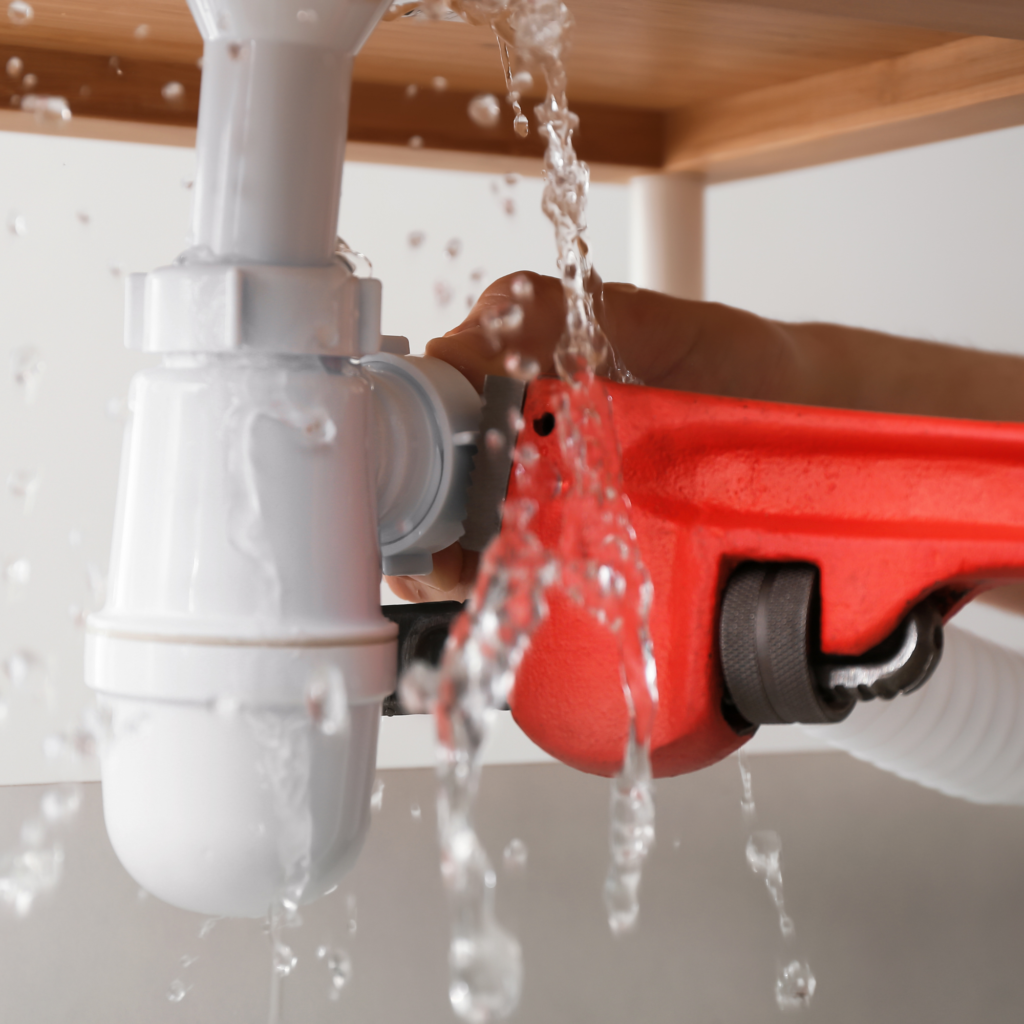
Unexpected plumbing damage can be stressful, but knowing how to respond promptly can minimize the damage and potential costs. Here’s what to do for unexpected plumbing emergencies:
- Shut Off the Water: The first step is to locate the main water shut-off valve and turn off the water supply to your home. This valve is typically located near the water meter or where the main water line enters your house. Shutting off the water will prevent further water damage while you address the issue.
- Assess the Damage: Quickly assess the extent of the damage. Is there flooding? Is water leaking from pipes, fixtures, or appliances? Identifying the source of the problem will help you decide on the appropriate course of action.
- Address Minor Leaks: If the damage is minor, such as a small leak from a pipe or fixture, you can try to contain it temporarily. Use towels, buckets, or a wet/dry vacuum to soak up water and prevent it from spreading.
- Turn Off Utilities if Necessary: If the plumbing emergency poses a risk to your electrical system, such as water coming into contact with electrical outlets or appliances, turn off the electricity at the main breaker panel. This will help prevent electrical shocks and fires.
- Call a Plumber: Contact a licensed plumber as soon as possible to assess and repair the damage. Make sure to choose a plumber who offers emergency services, especially if the situation is urgent. Provide them with as much information as possible about the problem.
- Document the Damage: Take photos or videos of the damage for insurance purposes. Documenting the damage will help support your insurance claim and ensure you receive proper compensation for repairs.
Clean Up: Once the water has been turned off and the plumber is on their way, begin the cleanup process. Remove excess water using mops, towels, or a wet/dry vacuum. Open windows and doors to ventilate the area and help dry out any moisture.
Prevent Mold Growth: Mold can start growing within 24-48 hours of water damage. Use fans or dehumidifiers to dry out the affected area as quickly as possible. Consider using mold inhibitors or professional mold remediation services if necessary.
Inspect for Structural Damage: After the immediate damage has been addressed, inspect your home for any signs of structural damage. Look for sagging ceilings, warped floors, or cracked walls, and address any issues promptly.
Follow Up: After the plumbing repairs are complete, follow up with your plumber to ensure everything is working correctly. Keep an eye out for any recurring issues or signs of water damage in the future.
By taking quick action and following these steps, you can minimize the impact of unexpected plumbing emergencies on your home and prevent further damage.

